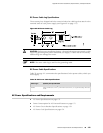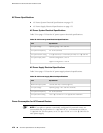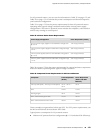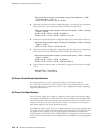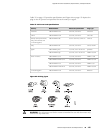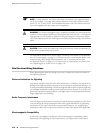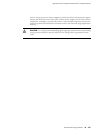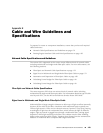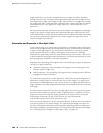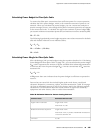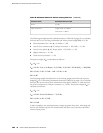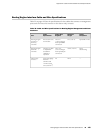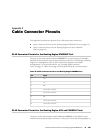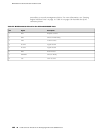
Appendix E
Cable and Wire Guidelines and
Specifications
To prepare for router or component installation, ensure that you have all required
cables and wires.
■ Network Cable Specifications and Guidelines on page 179
■ Routing Engine Interface Cable and Wire Specifications on page 183
Network Cable Specifications and Guidelines
The various PICs supported on the router accept different kinds of network cable,
including multimode and single-mode fiber-optic cable. For more information, see
the following sections:
■ Fiber-Optic and Network Cable Specifications on page 179
■ Signal Loss in Multimode and Single-Mode Fiber-Optic Cable on page 179
■ Attenuation and Dispersion in Fiber-Optic Cable on page 180
■ Calculating Power Budget for Fiber-Optic Cable on page 181
■ Calculating Power Margin for Fiber-Optic Cable on page 181
Fiber-Optic and Network Cable Specifications
The router supports DPCs that use various kinds of network cable, including
multimode and single-mode fiber-optic cable. For information about the type of cable
used by each DPC, see the MX-series Ethernet Services Router DPC Guide.
Signal Loss in Multimode and Single-Mode Fiber-Optic Cable
Multimode fiber is large enough in diameter to allow rays of light to reflect internally
(bounce off the walls of the fiber). Interfaces with multimode optics typically use
LEDs as light sources. LEDs are not coherent sources, however. They spray varying
wavelengths of light into the multimode fiber, which reflects the light at different
angles. Light rays travel in jagged lines through a multimode fiber, causing signal
dispersion. When light traveling in the fiber core radiates into the fiber cladding,
higher-order mode loss (HOL) results. Together these factors limit the transmission
distance of multimode fiber compared with single-mode fiber.
Network Cable Specifications and Guidelines ■ 179



